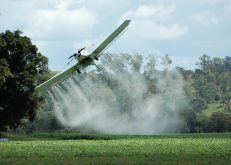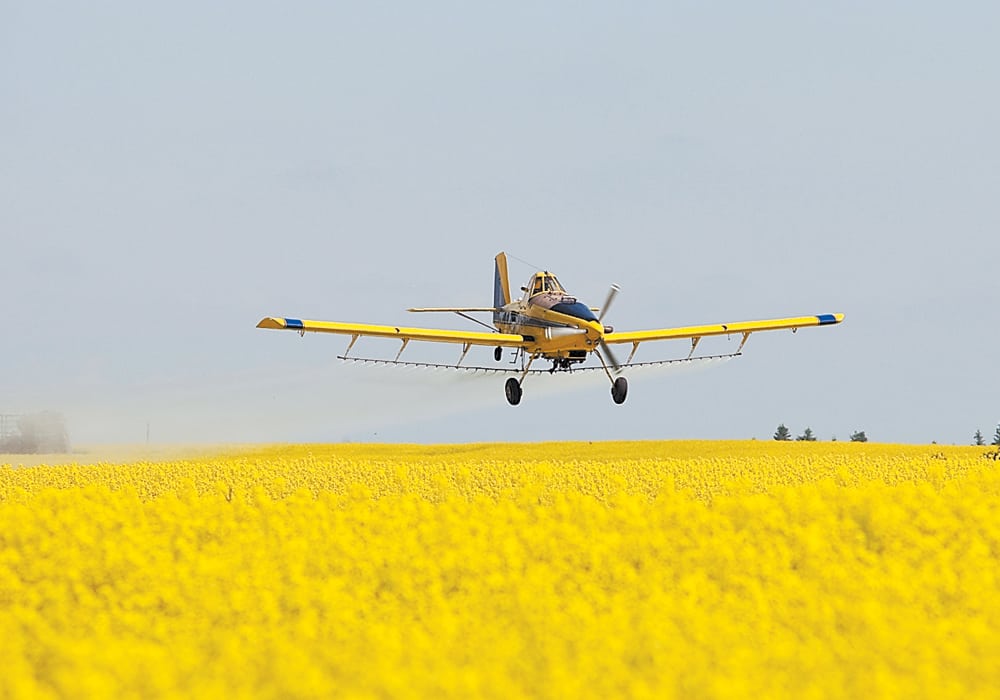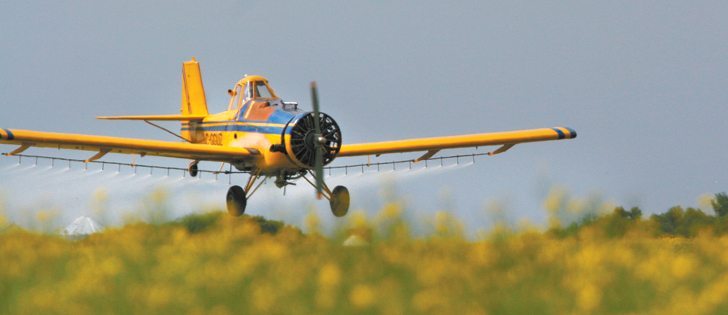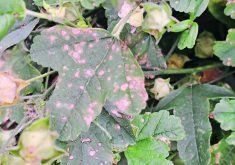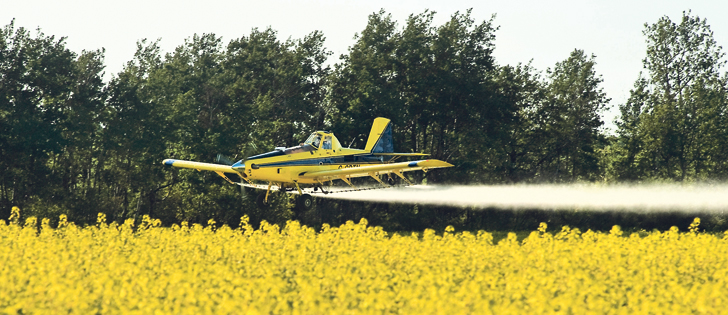Tests show more uniform-sized drops are achieved using rotary atomizers than with standard nozzles
If more spray droplets hit the sweet range of about 300 microns, the extra spray must come from the fine mist at the top end and big globlets at the bottom end.
That’s the conclusion drawn by spray plane operators equipped with rotary atomizers when doing a wet paper droplet scan test.
Michael Yaholnitsky, owner of Miccar Aerial in Yorkton, Sask., is one of them. This year, Miccar Aerial has six spray planes, all equipped with ASC atomizers.
“We’ve done comparisons of standard hydraulic nozzles and rotary atomizers. If you look at the water sensitive paper tests, you can see the droplet spectrum is much closer, much more condensed with rotary atomizer nozzles,” he said.
Read Also
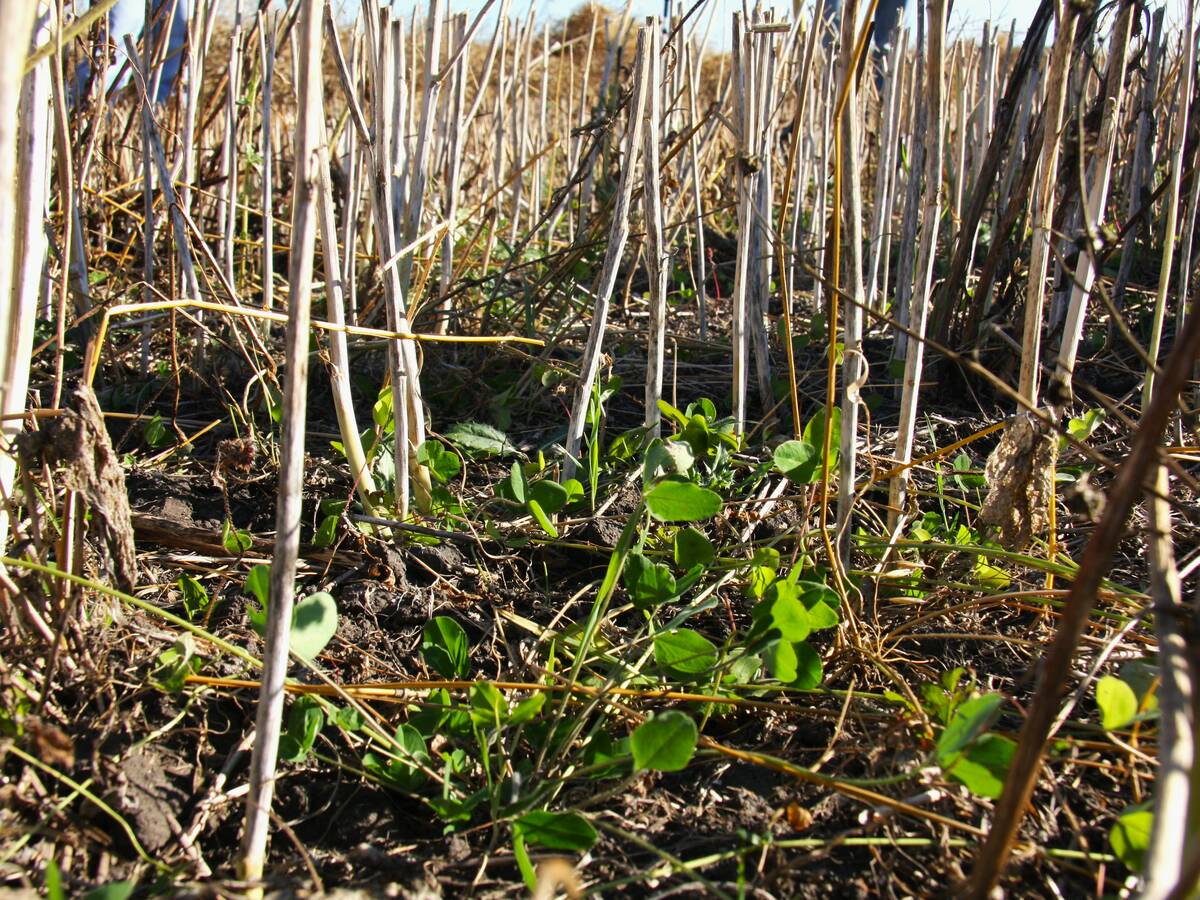
Saskatchewan project sees intercrop, cover crop benefit
An Indigenous-led Living Lab has been researching regenerative techniques is encouraging producers to consider incorporating intercrops and cover crops with their rotations.
Conventional hydraulic nozzles on aircraft can’t compete with rotary atomizer nozzles, he added.
With conventional hydraulic nozzles on a spray plane, the pilot adjusts flow according to the plane’s speed. The flow is determined by pressure, and whenever he changes pressure, he automatically changes the droplet spectrum.
Yaholnitsky feels no hydraulic nozzle does a good enough job of keeping droplets within the desired droplet size spectrum.
Operators change the ratio of big, small and target-sized droplets whenever they change pressure.
The fact that a spray plane is always in wind is a positive factor if the plane has blade rotary atomizer nozzles.
“With a rotary atomizer, the airplane is always in moving air,” he said.
“That’s the only way it can fly. So whether you’re flying with the prevailing wind or against it, the rotary atomizer blades are always in an airflow.”
He said the airplane flies at a constant speed, so the blades of the rotary atomizer also spin at a constant speed. All the flow control device does is regulate the amount of product going out to the atomizers. The flow might change, but blade speed, atomization and droplet spectrum all remain constant.
Yaholnitsky said a more consistent droplet size gives the crop better coverage. The atomizer creates the profit.
“We can change our range if that’s what the label says, but our (variable mean droplet size) always remains constant,” he said.
“We can go from 100 microns to 400 microns. For agricultural purposes, we typically run in the range of 250 to 350 microns. It’s easy to change droplet size with ASC atomizers. We simply change the speed of the blade. ASC atomizers have variable pitch, just like an aircraft propeller. All we need is an Allen wrench. If we change the pitch, we change the atomizers r.p.m. Faster atomizer speeds give us a finer droplet. Slower atomizer speeds give us a coarse droplet.”
Yaholnitsky said aerial spraying has advantages over conventional ground sprayers.
“Consider a high clearance unit that sprays from four m.p.h. to 16 m.p.h.,” he said.
“That’s a 400 percent speed variance. If you’re varying 400 percent on your pressure, your droplet range is humongous. A spray plane with atomizers has a 10 percent speed variance. Which one is going to deliver more uniform droplets in that desired range around 300 microns?”
For more information, contact Yaholnitsky at 306-786-3345 or visit www.miccareial.com.




